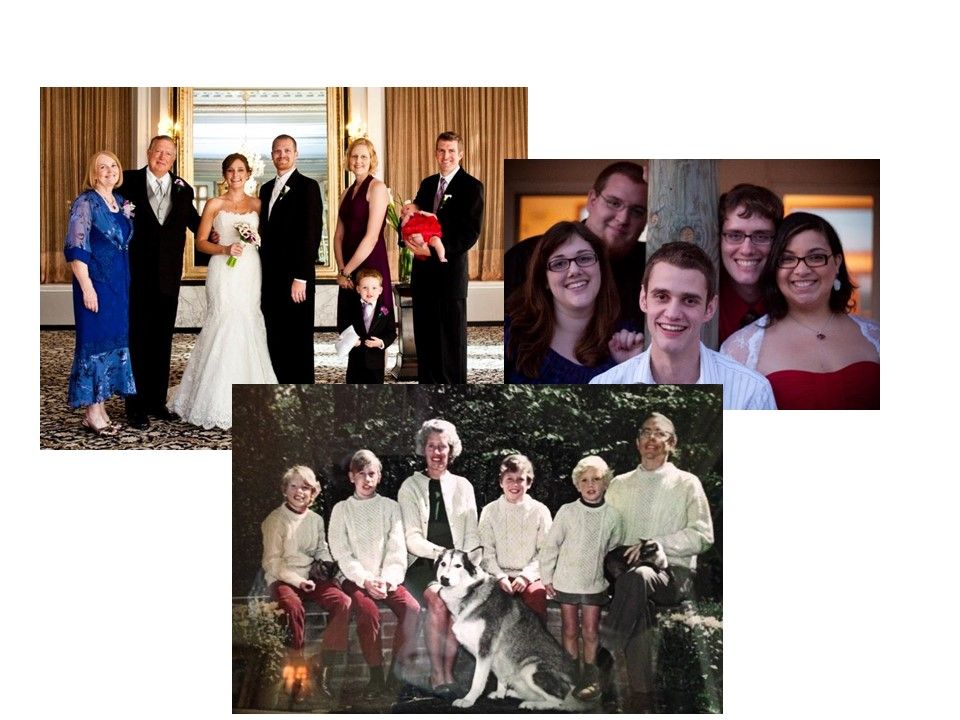Clayton Mark and Family
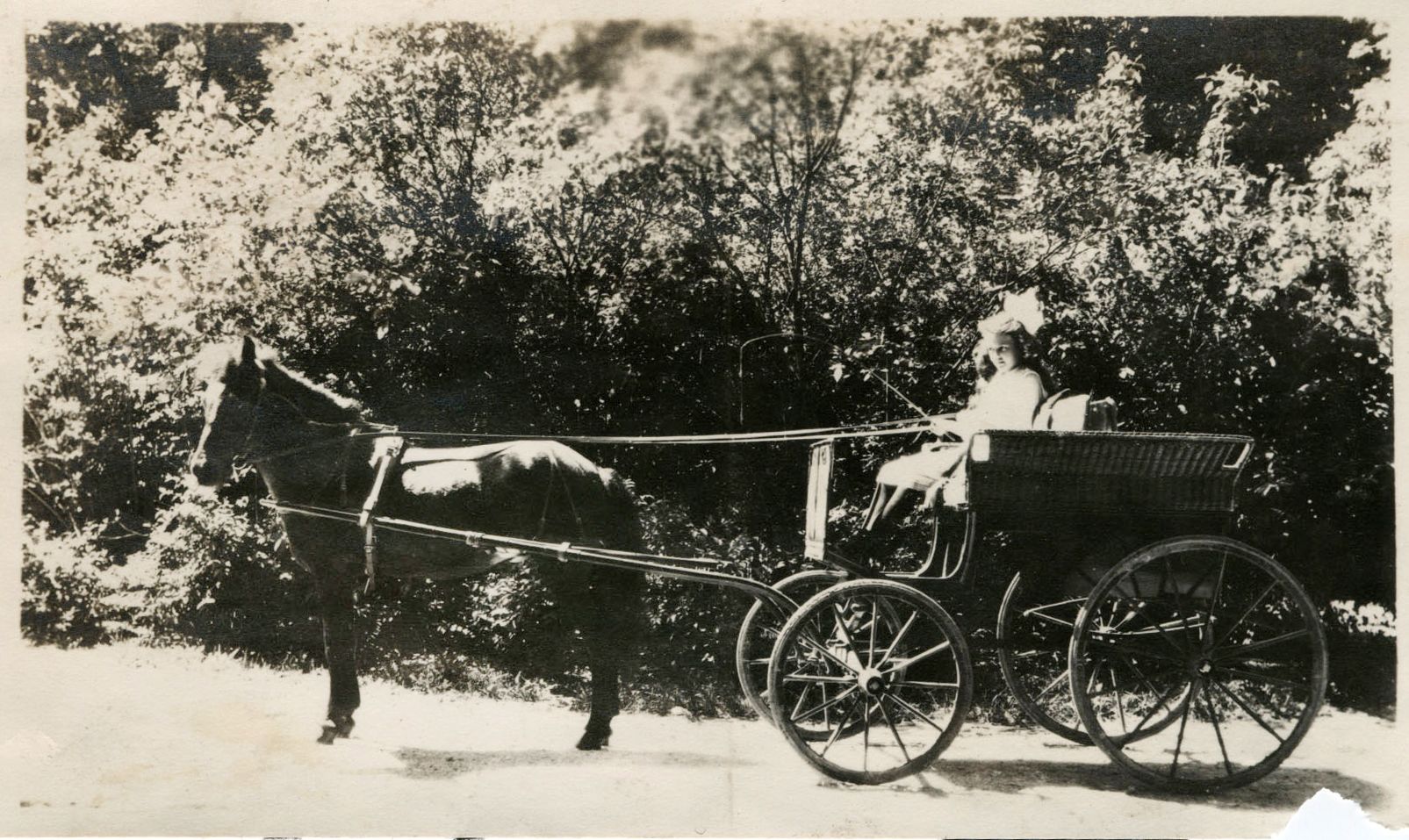
Born in Pennsylvania in 1858, Clayton Mark was what people in the 19th century called a self-made man, who, though he had little more than a grade school education, became one of Chicago’s most prominent steel industrialists. In 1872 his family moved to Evanston, where his father had a dry-goods store. When that burned down, his parents moved on to Iowa, but Clayton stayed here. In 1876 he became a clerk with the Chicago Malleable Iron company, and his life was closely connected to the steel industry from then on.
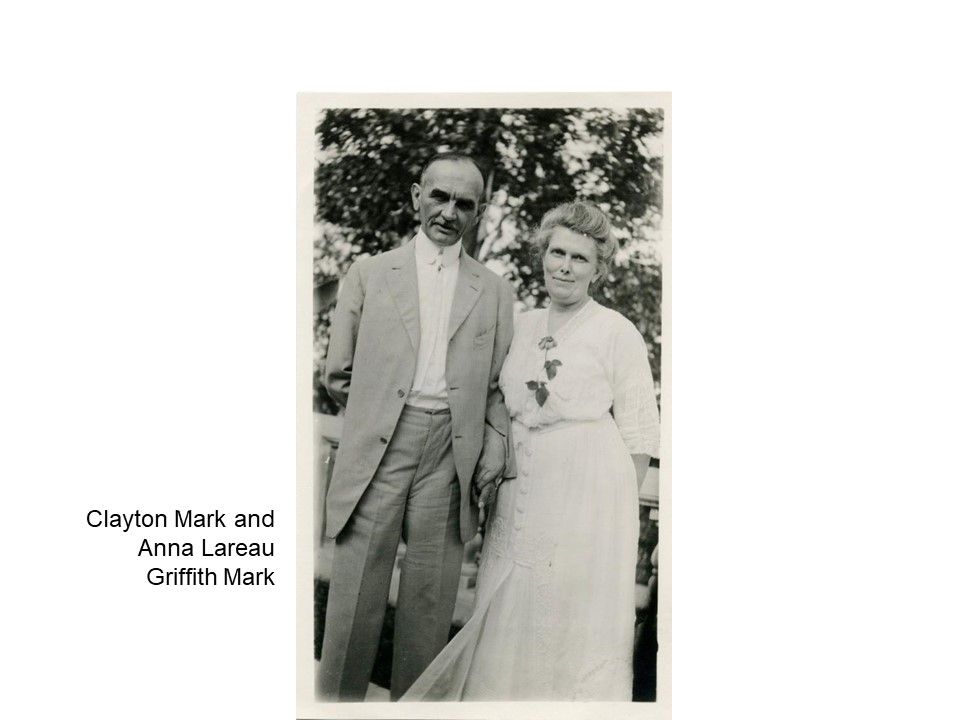
On a trip to see his parents in Iowa, he met and then married Anna Lareau Griffith and brought her back to Chicago. In 1888, Clayton Mark entered the well supply business in a shop on LaSalle Street. As business grew, he decided to become his own supplier, and built a steel pipe mill on Dempster street in Evanston.

In 1902, Clayton Mark formed his own firm, the Mark Manufacturing Company. When the government requisitioned his plants to produce armor plate during World War I, he was left with a huge amount of unmarketable material after the war. That, coupled with the postwar downturn, forced him to sell the company in 1923. Nothing daunted, the very next year Mark, at age 64, organized a new manufacturer and retailer of well supplies, Clayton Mark & Company, that lasted for decades. During the Depression, he used his own money to keep the company open and keep paying wages even though there were few orders and little work to be done.
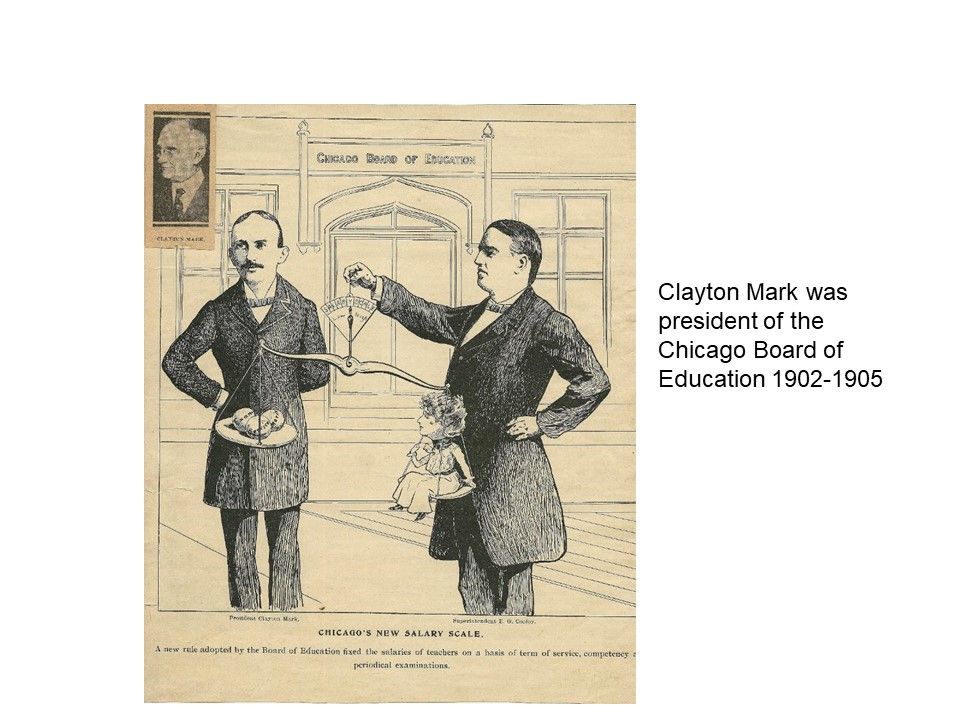
Clayton Mark was passionate about efficiency in his industry and brought that same reforming spirit to education. He was a member of the Chicago Board of Education from 1896 to 1905, and president in 1902. During his tenure, schools in Chicago saw all sorts of progress: the incorporation of kindergartens into public schools; the rise of playgrounds; the construction of new buildings to alleviate crowding; and, most importantly, the reform referenced in this political cartoon: the appointment and promotion of teachers based on merit rather than patronage.
Once his family moved to Lake Forest, Clayton Mark was also very involved in local education. He served on the boards of Ferry Hall and Lake Forest Academy, and presided over Lake Forest College’s trustees from 1911 to 1920. Following his leadership, in 1923 the College, the Academy and Ferry Hall, beforehand under one umbrella, broke into three separate institutions, ensuring a healthier future for each school.
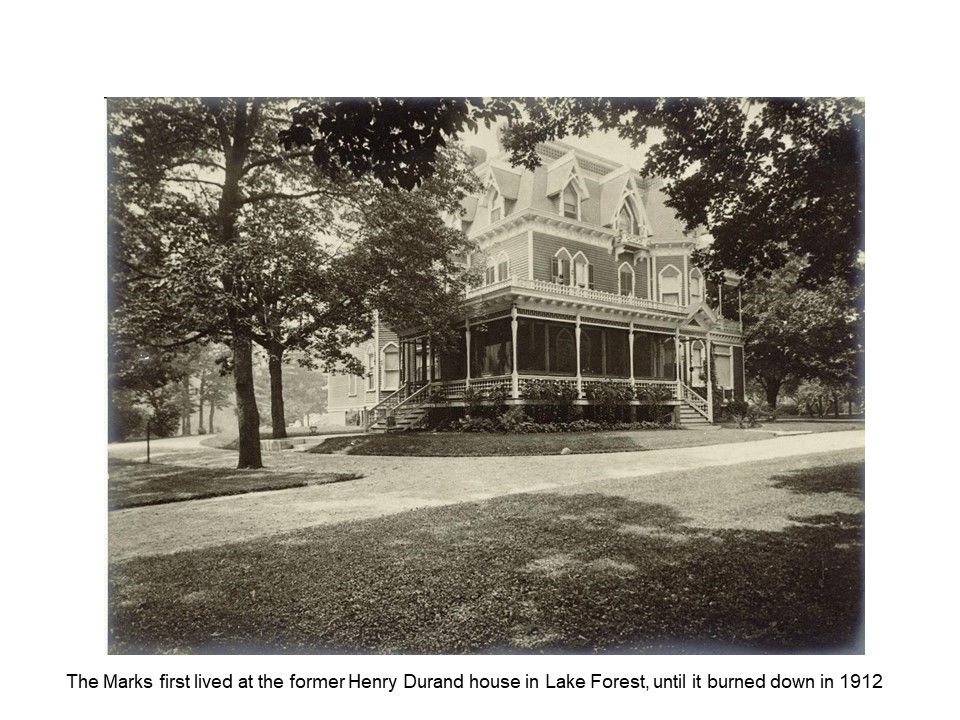
The first house the Marks lived in in Lake Forest, starting around 1906, was the former Henry C. Durand house on Deerpath, which dated back to the founding of the town. When it burned down in 1912, Clayton Mark turned to his friend Howard Van Doren Shaw to build a new place for his family to live.
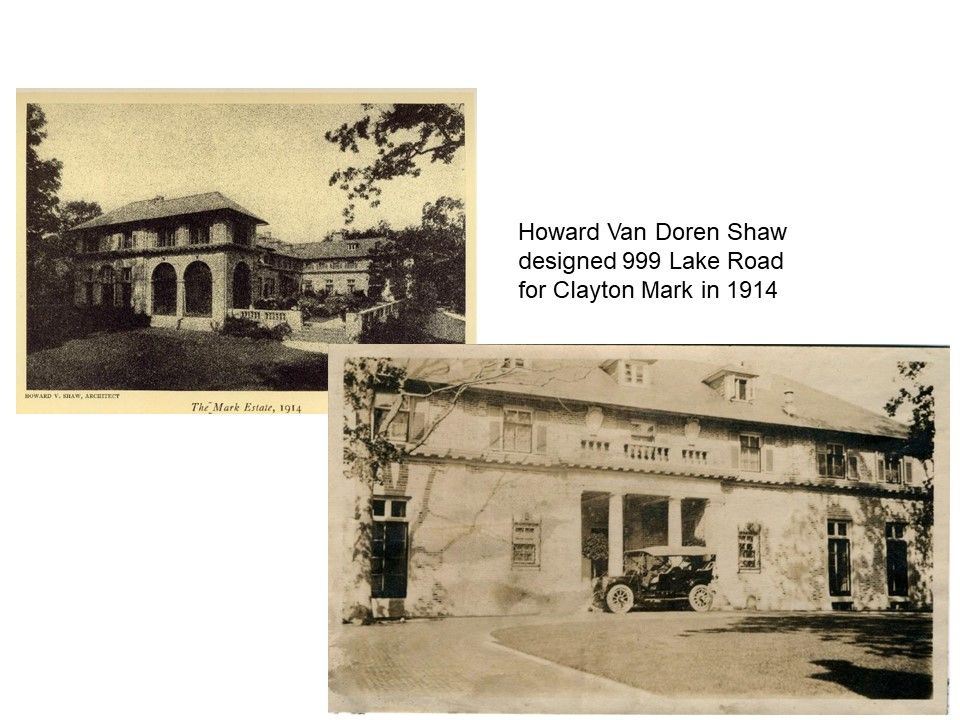
This was a spectacular home, designed with Italian influences, at 999 Lake Road. Landscape architect Rose Standish Nichols planned the gardens. The land encompassed over 20 acres, and extended from the lake to Hawthorne Lane.
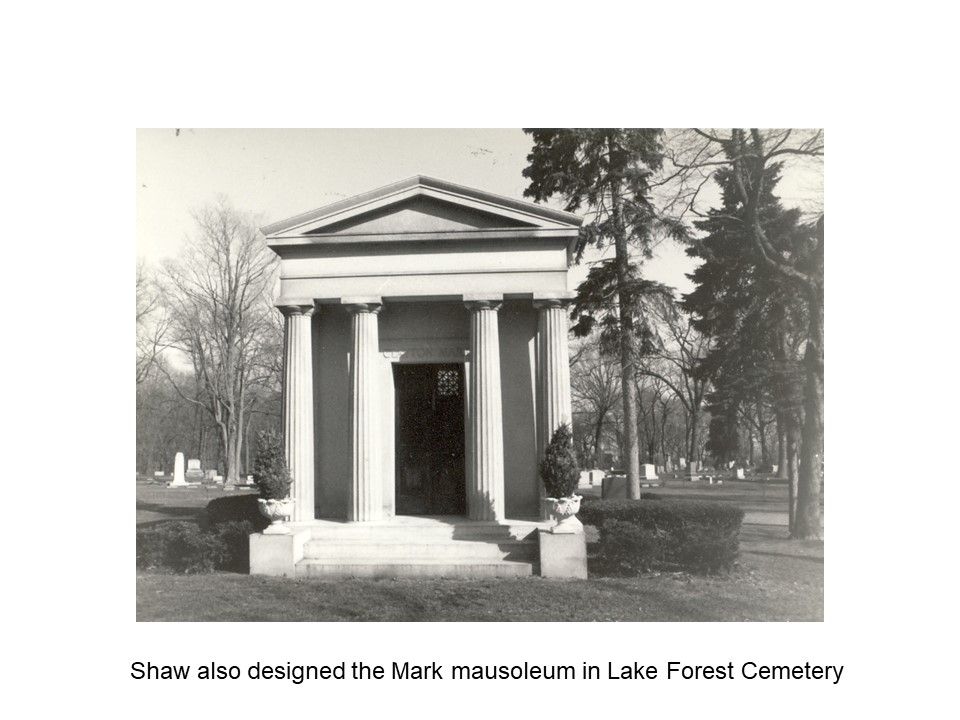
The house was the first of many projects on which Clayton Mark would partner with Howard Van Doren Shaw. The next was the family mausoleum in Lake Forest Cemetery, built when his wife Anna died in 1915. According to family recollections, the mausoleum contained such large slabs of granite that the only way they could be transported was by rail car – so temporary tracks were laid from the Northwestern line all the way to the cemetery and then taken down once the granite had been moved.
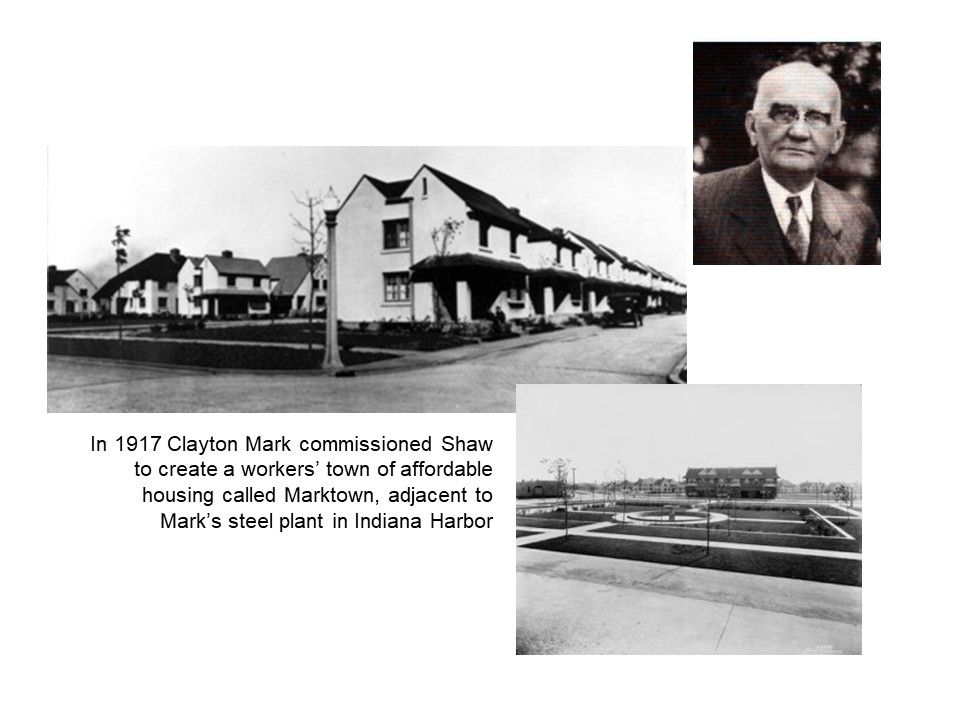
The ambitious project that could have been Clayton Mark and Howard Van Doren Shaw’s crowning achievement was unfortunately interrupted by World War I. In 1917, Mark commissioned Shaw to design a town of affordable housing for 8,000 workers at the Indiana Harbor Works of the Mark Manufacturing Company. Unfortunately, Marktown was never completed as planned. A small section built before the war, including commercial buildings, supervisor homes and 97 white stucco workers’ homes, is on the National Register.

Clayton and Anna Mark had nine children, who all very much made the most of living right beside the beach in Lake Forest.
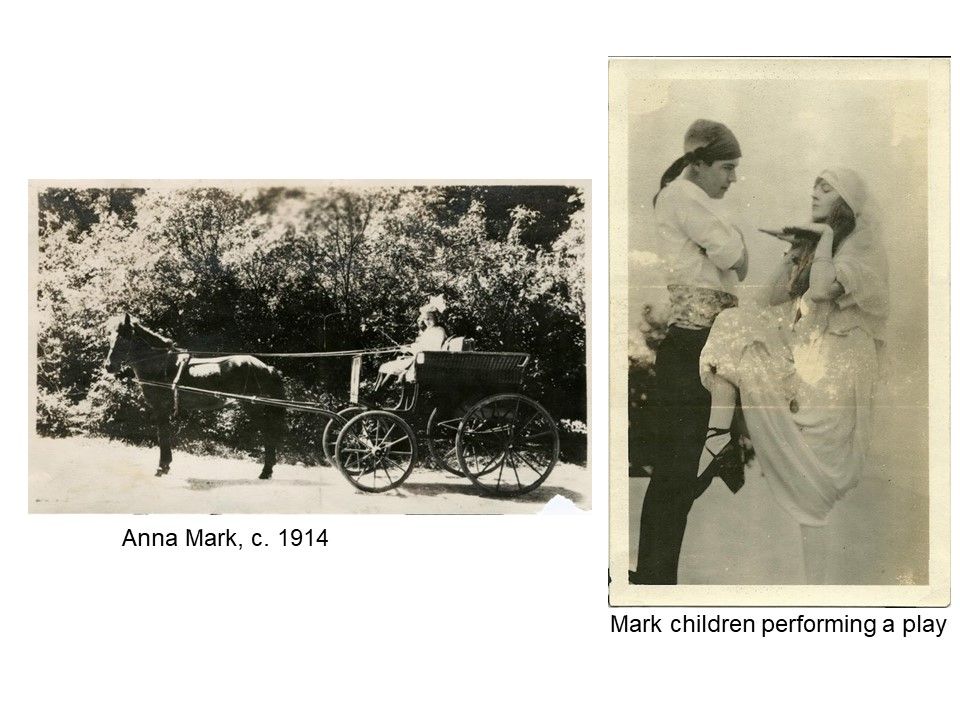
They enjoyed putting on theatrical performances for their parents and neighbors, having in effect a ready-made entire cast in their household. The children would also take turns meeting their father at the train station at the end of the work day with a horse and carriage – even though they certainly had a car that could pick him up as well.
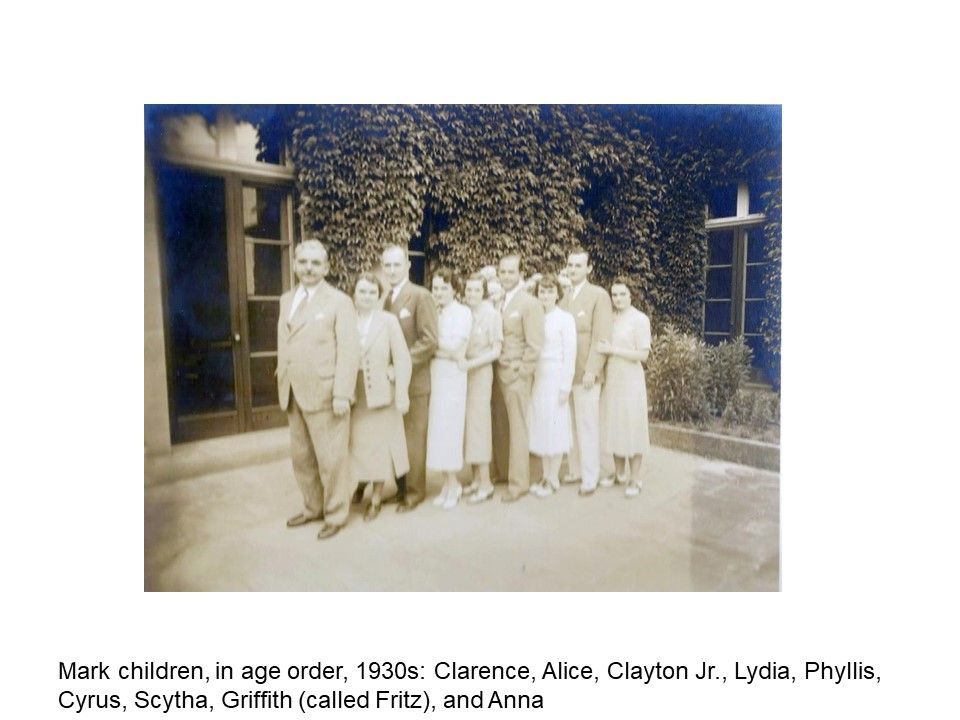
The Marks are all pictured here in age order in the 1930s. The eldest, Clarence, ended up on the east coast, though some of his descendents returned to the north shore. He became president of the George Washington Coffee Refining company and was a pioneer in the field of instant coffee.
Alice, the oldest girl, became a mother figure to the younger siblings when their mother died in 1915. After she married McMicken Hanchett, she moved to Iowa, where she chose not to have children, having been through that process once already.
Clayton Mark Jr. joined his father’s firm after graduating from the University of Illinois with a degree in engineering. He helped organized Clayton Mark and Company and in the late 1930s, reacquired the Evanston plant that had been sold following World War I. His son Clayton III was the head of Research and Development at the company for many years.
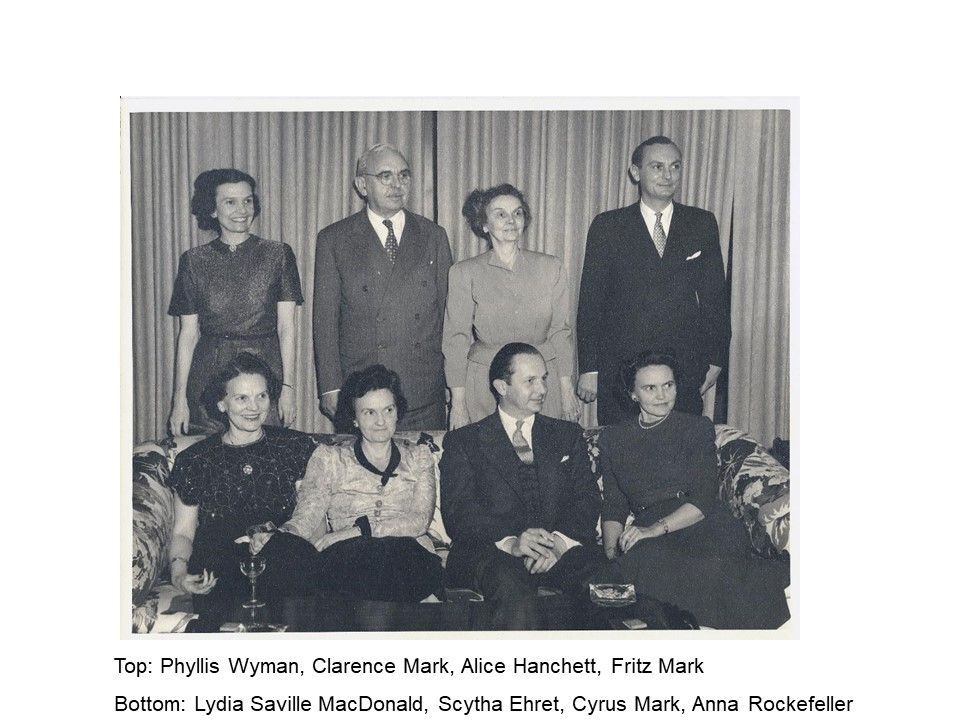
Clayton was the first of the siblings to pass away, of a heart attack at his home in Wilmette in 1948, so you’ll see that he is absent from this family photo, taken around 1950.
His sister Phyllis, who married Everett Wyman, was the only one of the siblings to stick around Lake Forest in the 1940s and 1950s after their father passed away. She and her son Parker lived in the estate’s former gardener’s cottage on Woodbine.
Scytha Mark married Alvin Ehret and lived on the east coast. Alvin was the roommate of her brother Griffith, always called Fritz by the family, at Yale. Fritz must have been something of a matchmaker, because as it turned out, another of his Yale buddies married another of his sisters in something of a family scandal.
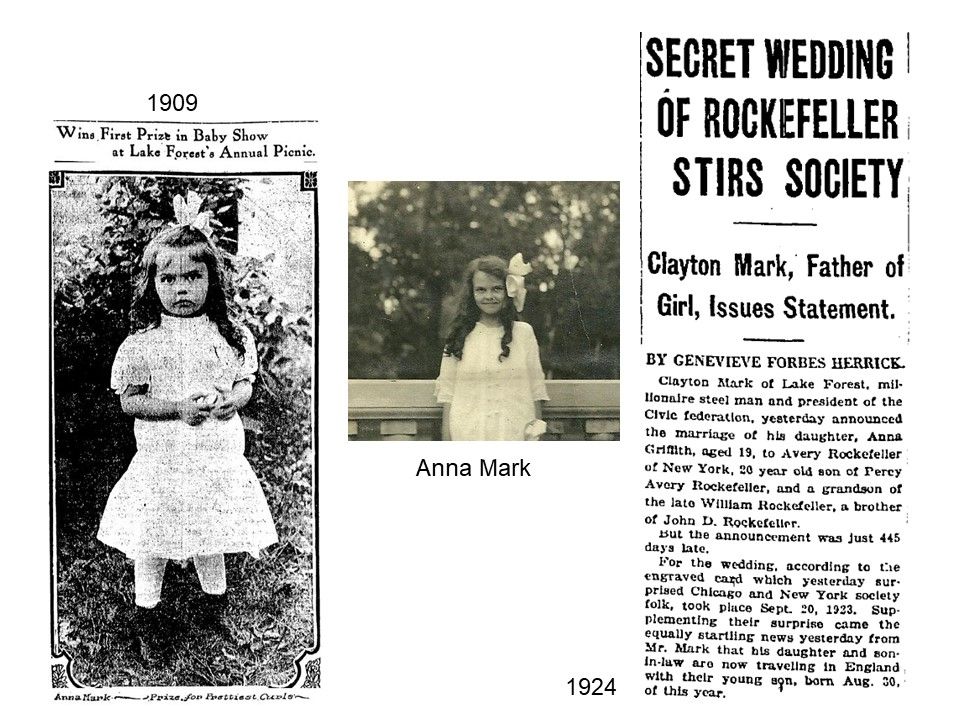
Anna Mark was the youngest of the family, and always known for being very pretty. She even won first prize in the Lake Forest Day baby show in 1909 for having the longest and prettiest curls. She was attending school at Rosemary Hall in Connecticut in 1923 when her brother Fritz was at Yale and became very close to one of his good friends, Avery Rockefeller – so close, in fact, that they secretly got married in 1923 but decided to both complete their education before telling their parents. However, the arrival of Avery Jr. in 1924 complicated matters, and they were forced to reveal the marriage, which caused something of a stir in the press due to the prominence of both families.
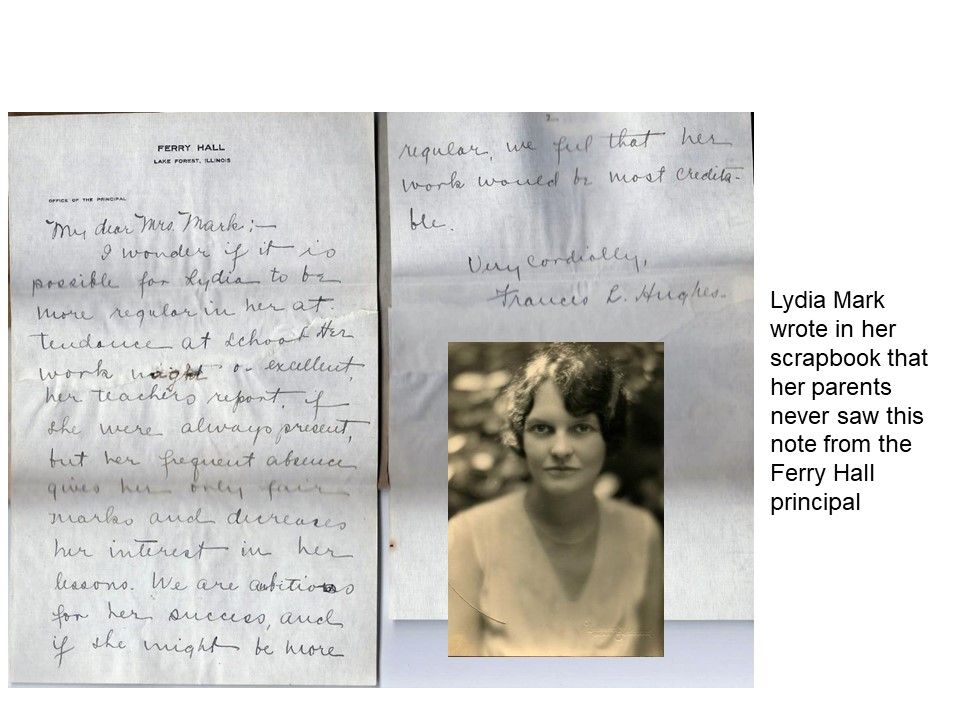
Anna Mark was not the only one of her siblings to conceal something from her parents. This letter was found by the descendents of Lydia Mark amongst her papers. Lydia, like most of her sisters, attended Ferry Hall before going to school out east. The letter is from the Ferry Hall principal, and the gist of it is that Lydia Mark has the potential to be an exemplary student – if only she would spend more time attending class! According to a note in Lydia’s handwriting, the letter never reached the eyes of her father Clayton Mark.
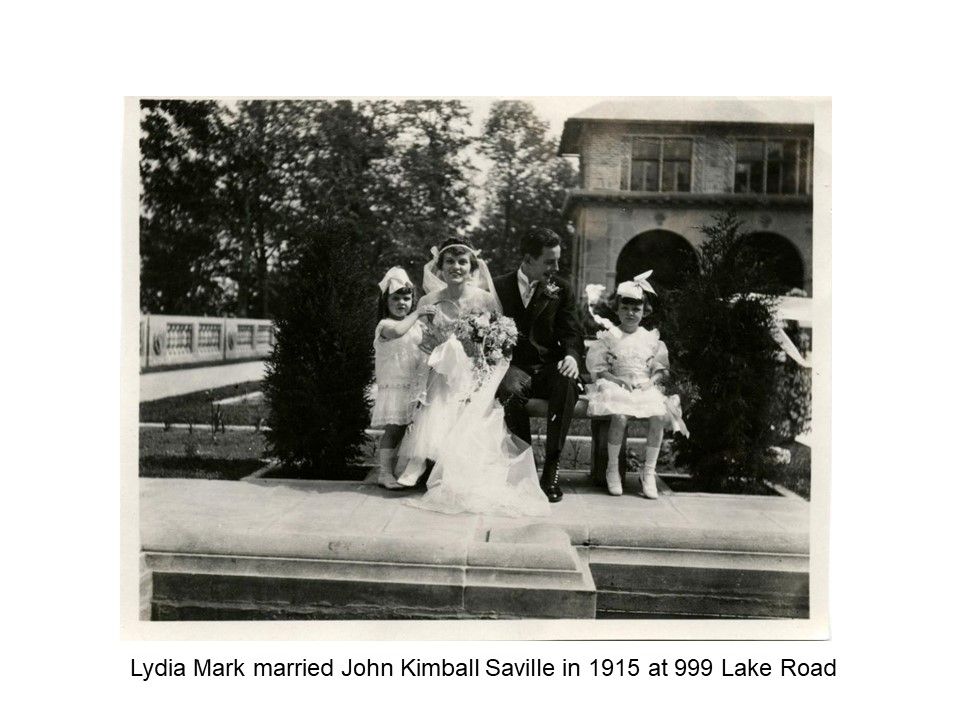
Lydia Mark met John Kimball Saville, whose family was from Boston, while she was attending college at Bryn Mawr. They married in 1915, a June wedding held at the Mark home on Lake Road, and John came to work for her father’s company.
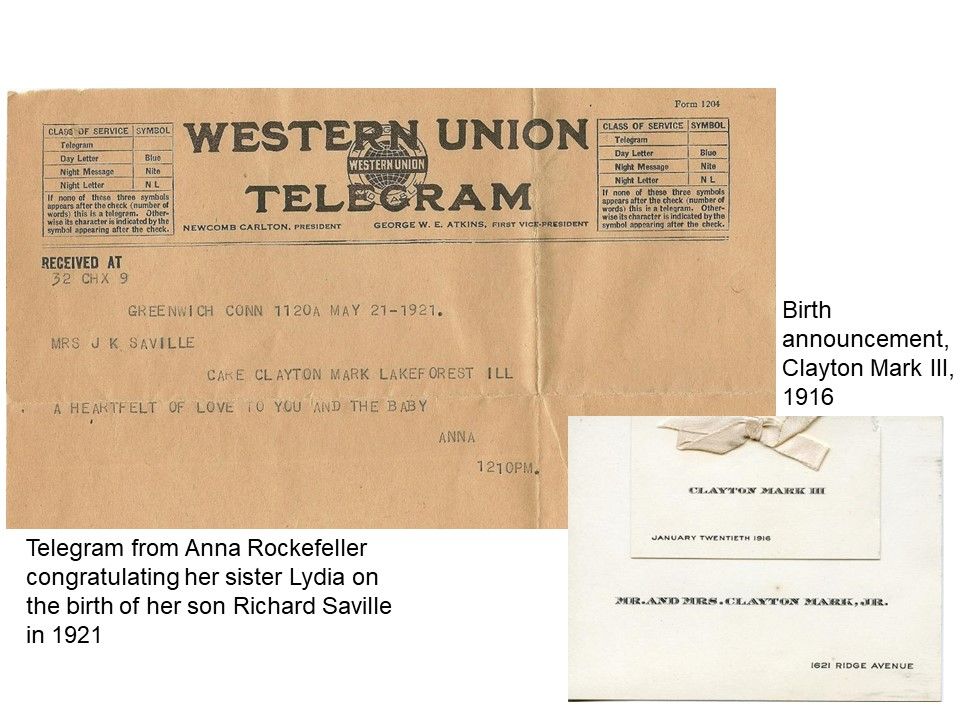
The next generation of Marks was starting to arrive. Here you can see a birth announcement: Clayton Mark III was born in 1916. There is also a telegram from Anna Mark Rockefeller, living in Connecticut, to her sister Lydia congratulating her on the birth of her son Richard in 1921.
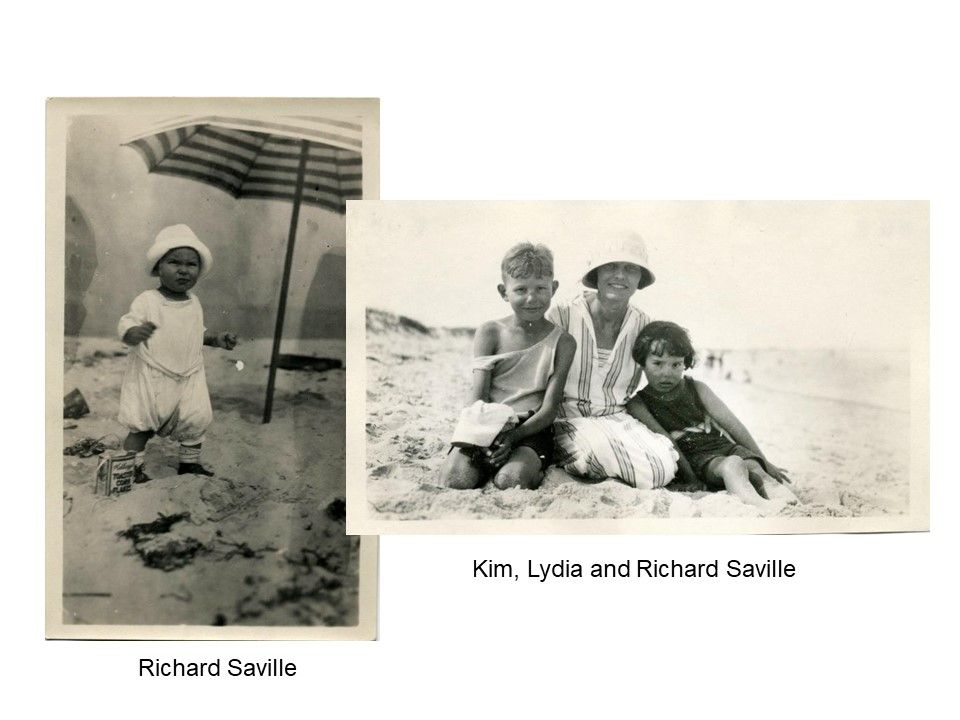
Lydia and John Kimball Saville had three sons: John Kimball Jr., called Kim, Richard, and Mark. They lived in Evanston but spent quite a lot of time at the Lake Forest house on Lake Road. Clayton Mark would hire a lifeguard so all the grandchildren could spend time on the family’s private beach safely.
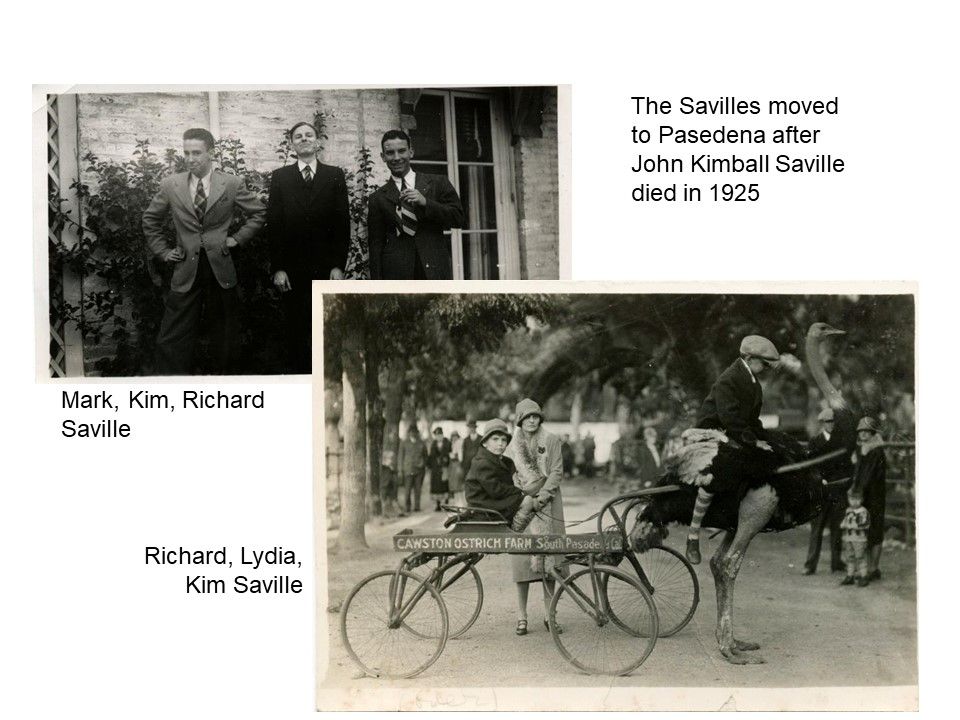
John Saville died very young, at age 38, in 1925. After his death Lydia Saville and the children moved to Pasadena, California, where she later remarried Arthur Tremaine McDonald.
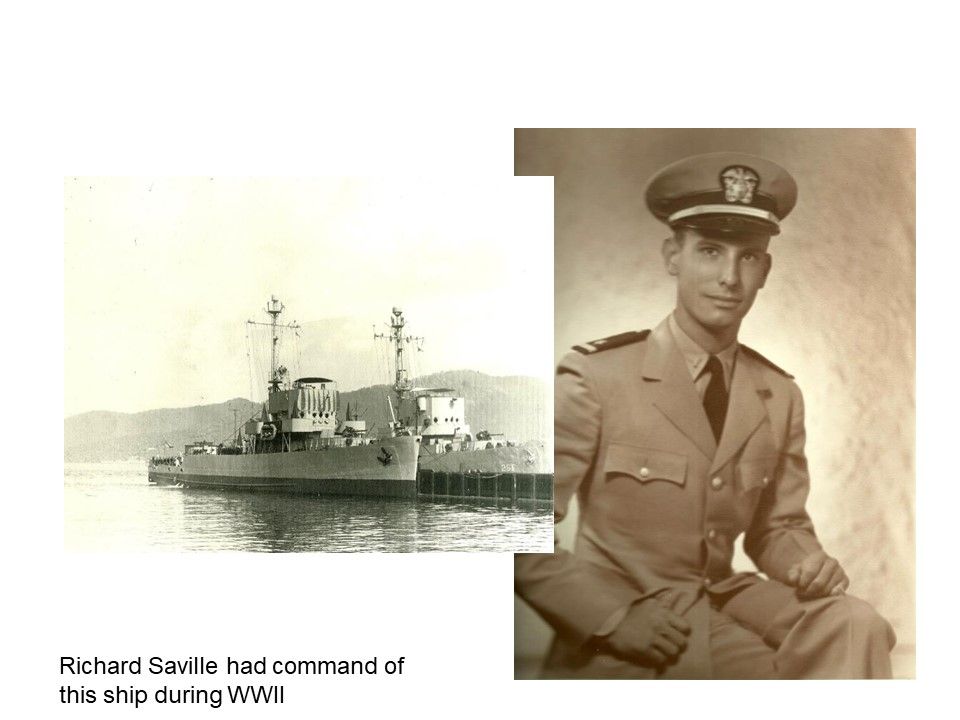
Richard Saville served in the Navy during World War II, and had command of his own ship, a destroyer escort, while still in his early 20s.
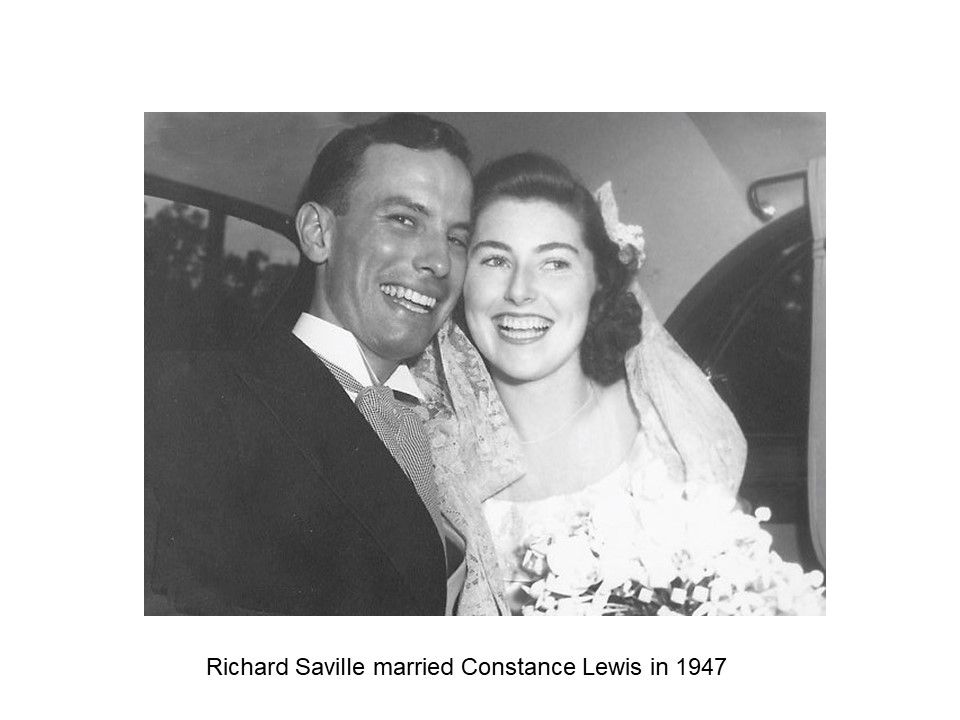
It was while he was in the Navy that he met his future wife, Constance Lewis, who was also working for the Navy during the war. Though they lived within blocks of each other in Pasadena, their paths never crossed until a train trip back from San Francisco to Pasadena after Thanksgiving.
They married in 1947 and eventually made their way back to the Chicago area. Richard worked for Clayton Mark and Company for a time before starting his own management consulting firm, Saville Associates.
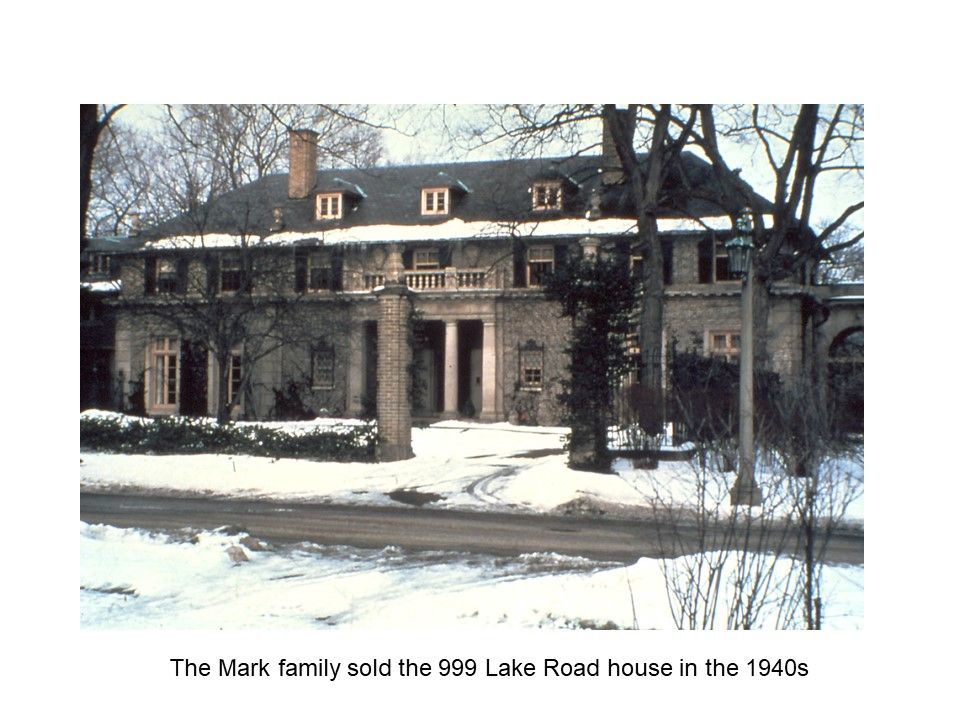
Richard Saville had fond memories of that house growing up, and always wanted to return to Lake Forest. In 1960 they bought a house at 413 Illinois Road that may have also been a Howard Van Doren Shaw design, and moved here with their four children: Dick, Alice, Terry and Kathy.
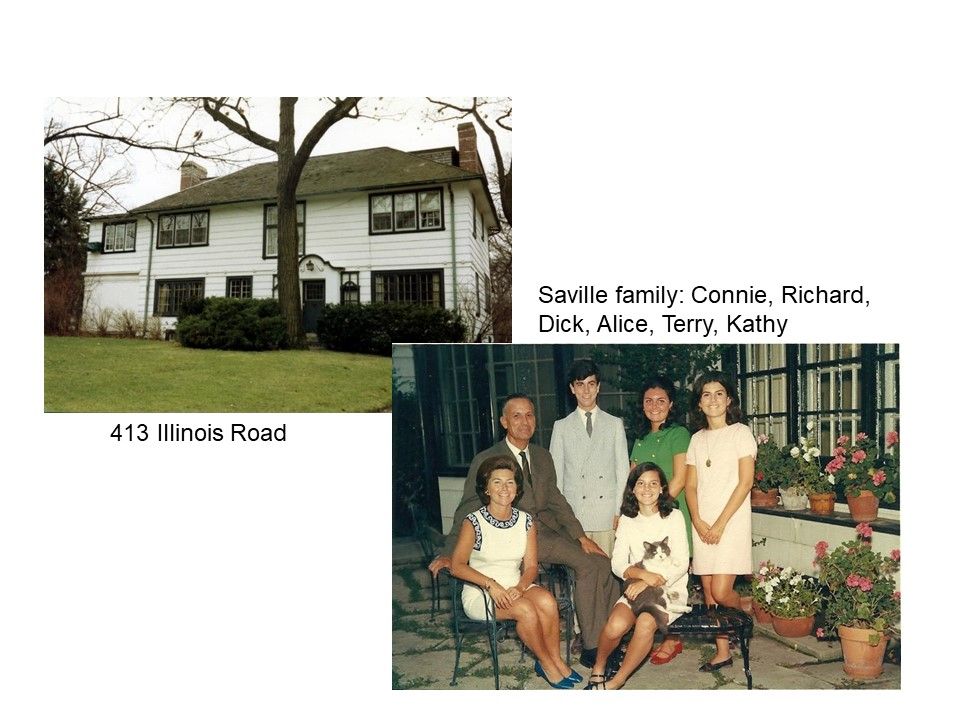
Now the Mark family had a new home in Lake Forest to host family reunions.
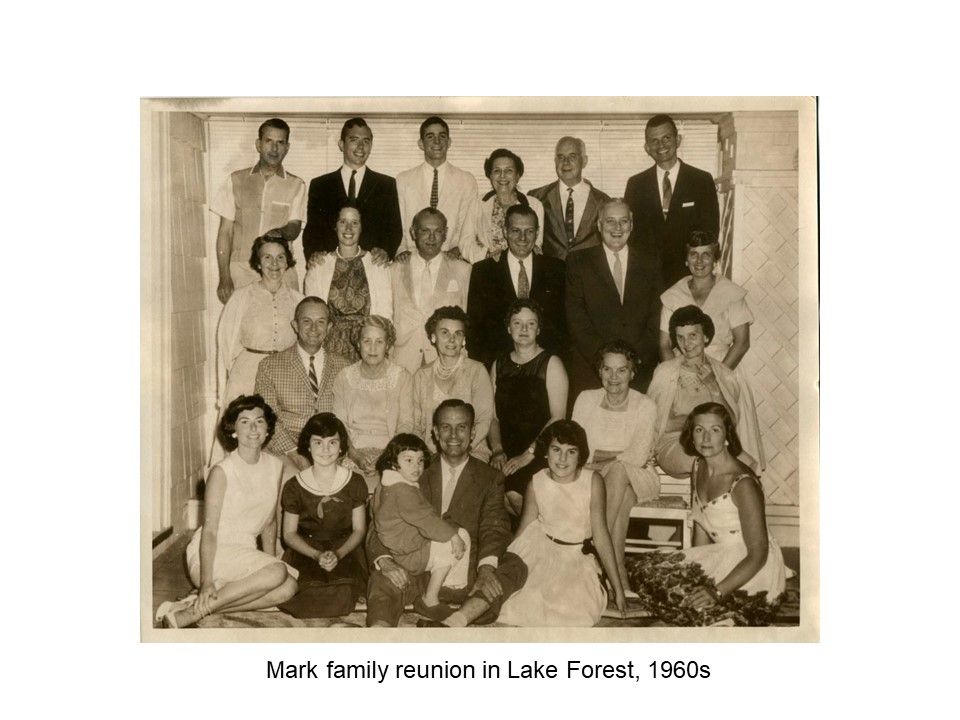
The Saville children attended the School of St. Mary and Lake Forest Country Day School…
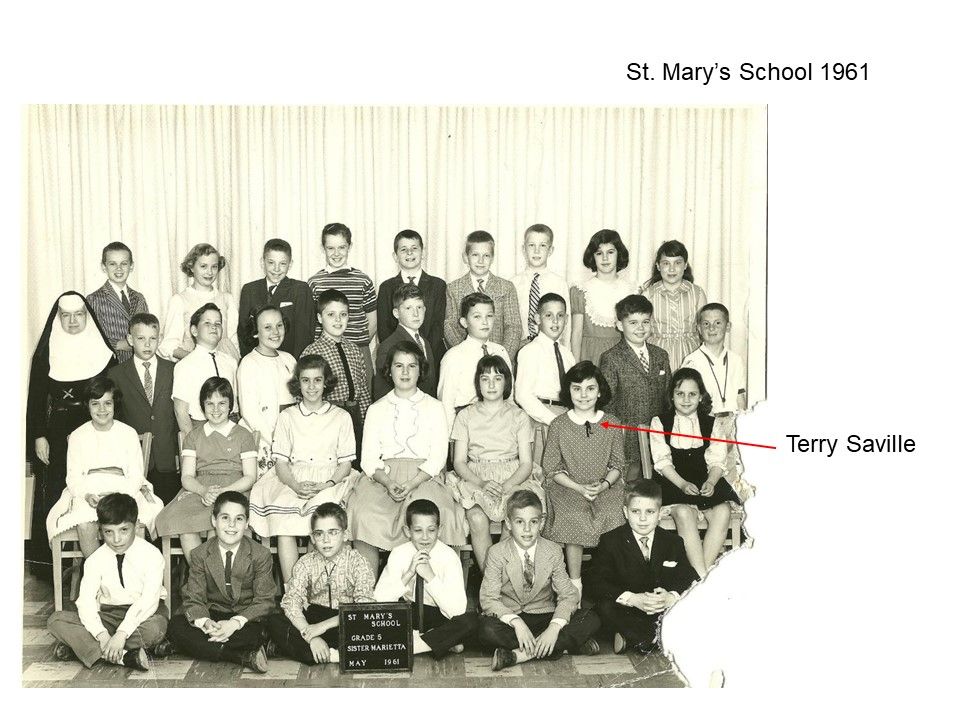
…and the girls graduated from Woodlands Academy. Soon, there was a fourth generation of the family in Lake Forest.
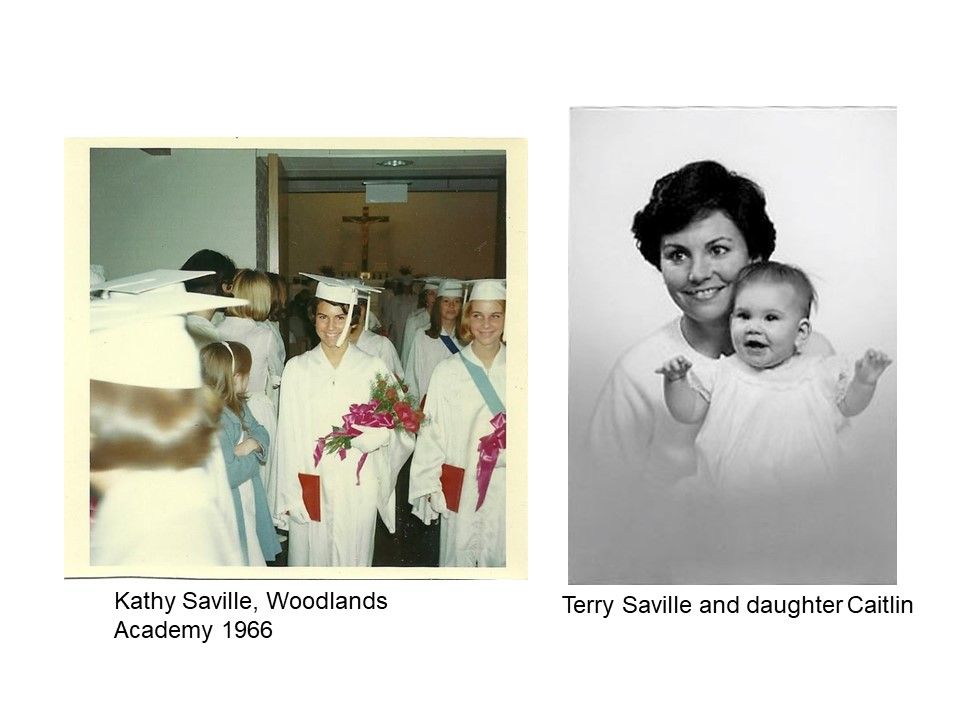
Terry’s daughter Caitlin Saville Collins has made her home here as well, on Noble Avenue.

Though the Savilles are the only branch of the family still in Lake Forest, other Mark family descendents stayed on the North Shore. Several, like Clayton Jr.’s son Clayton III, continued to work for Clayton Mark and Company until it was sold in the 1970s. After that, channeling his grandfather’s entrepreneurial spirit, he joined with his brother Stephen to form another company that made street light brackets for cities and electrical suppliers like ComEd. The name? Kram Metal Products – Mark spelled backwards.
